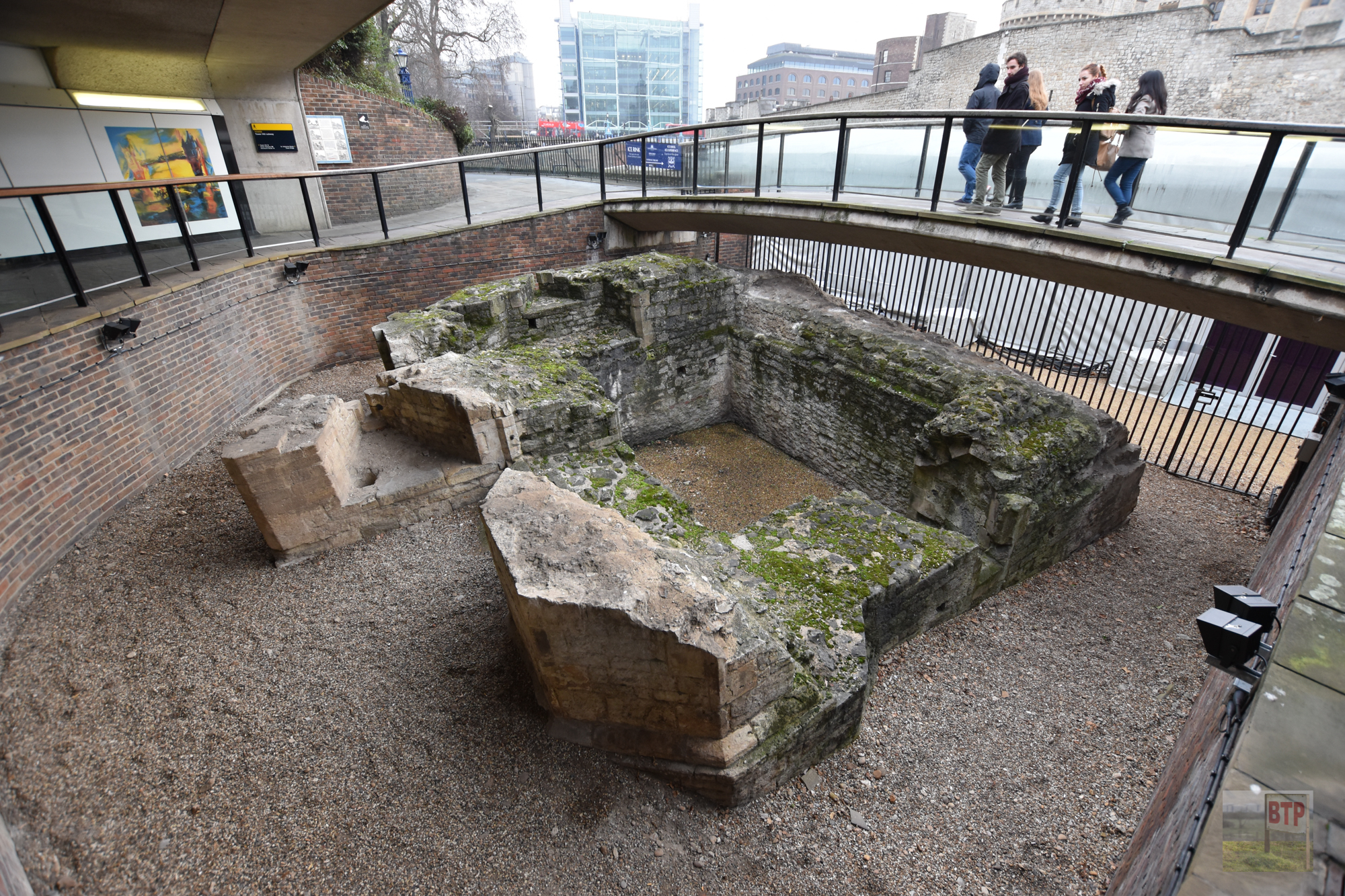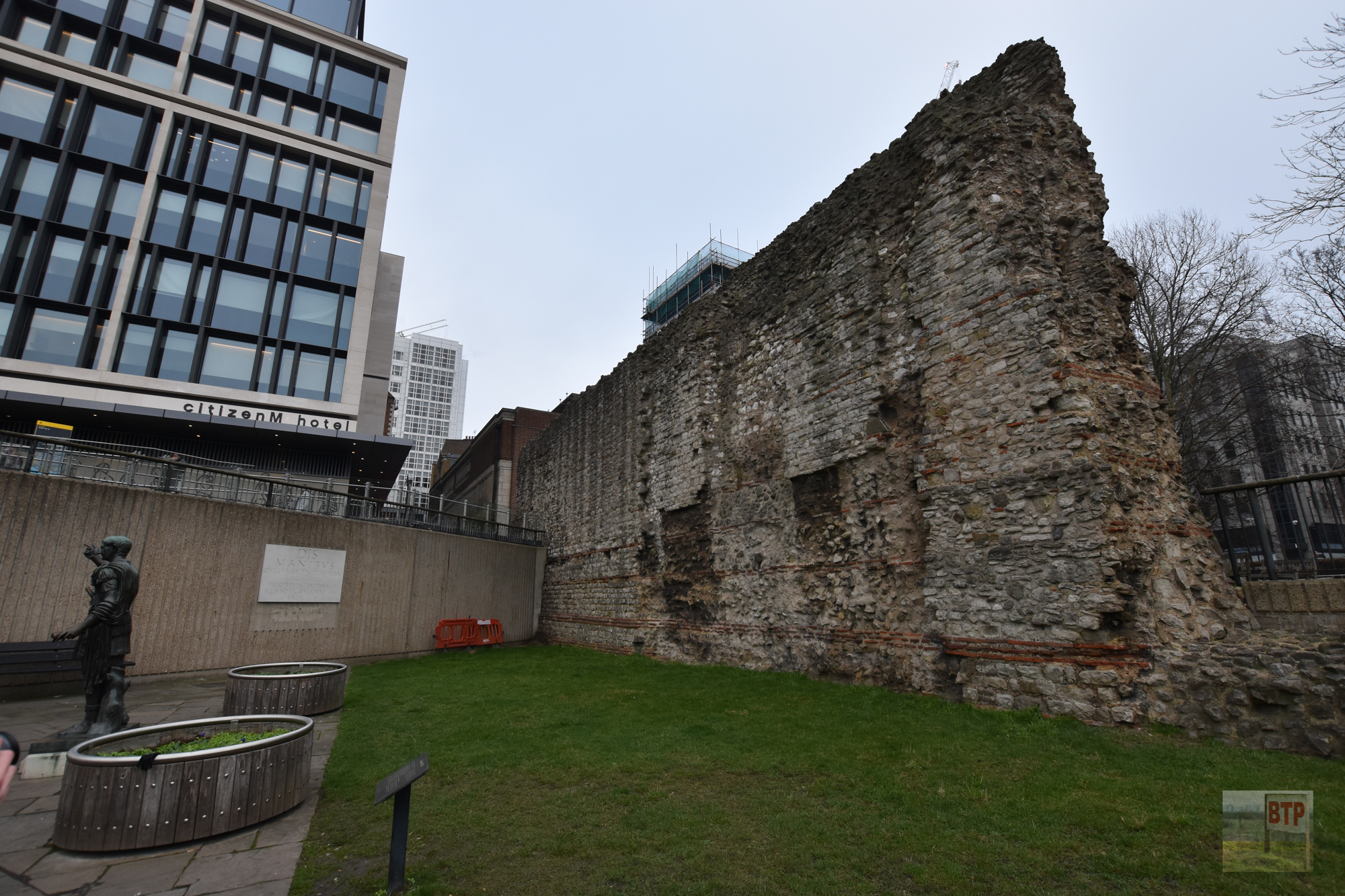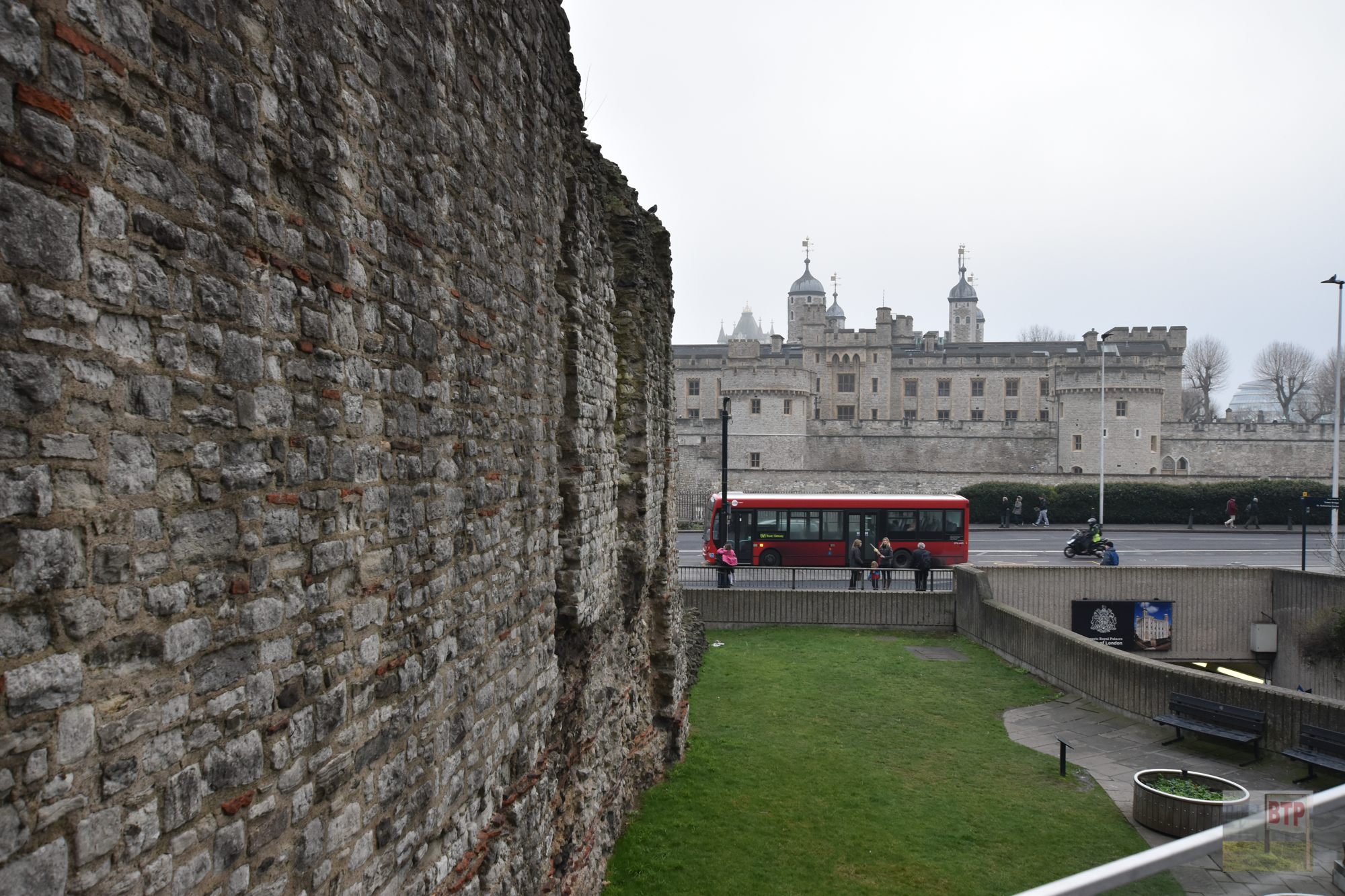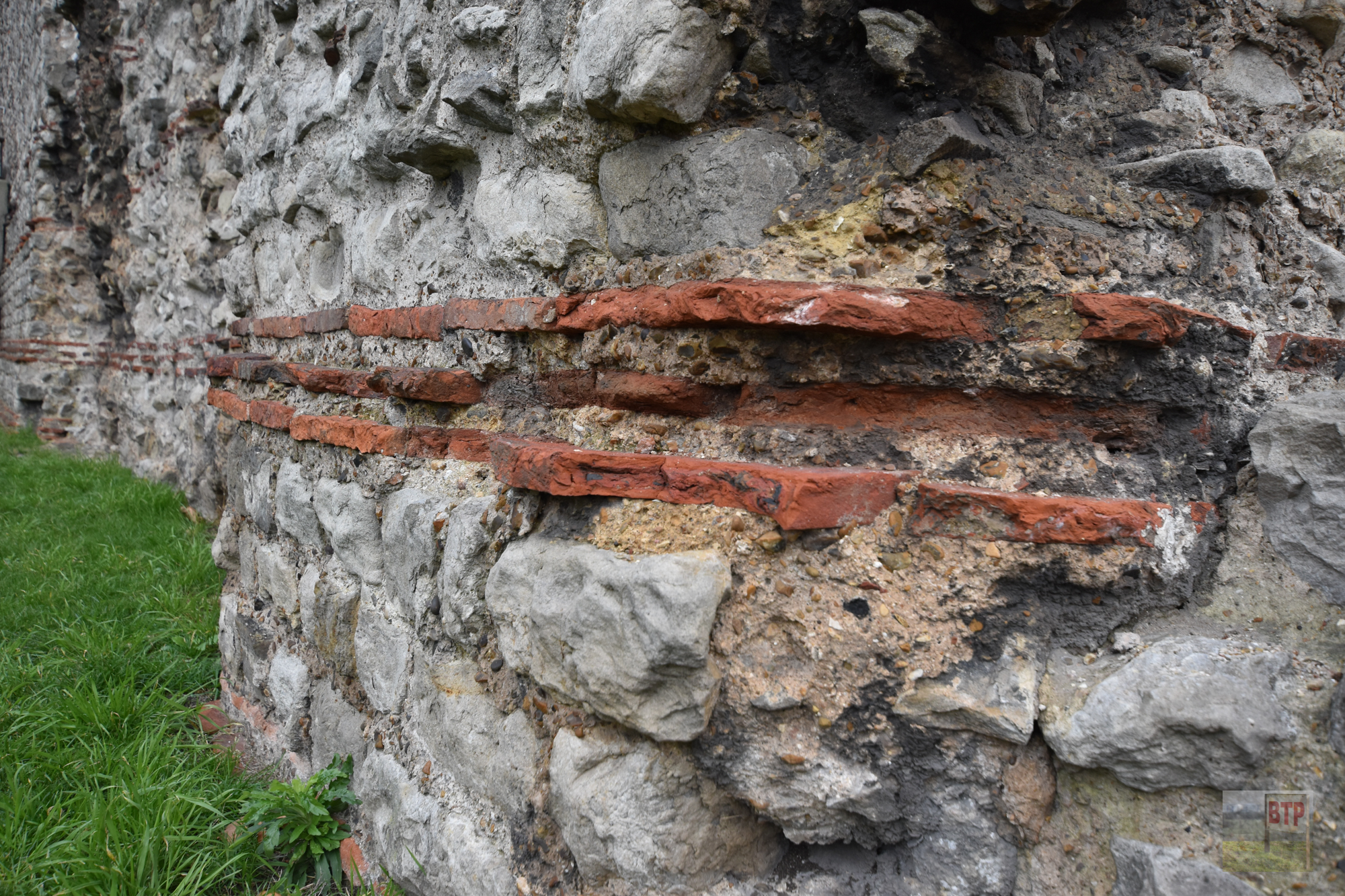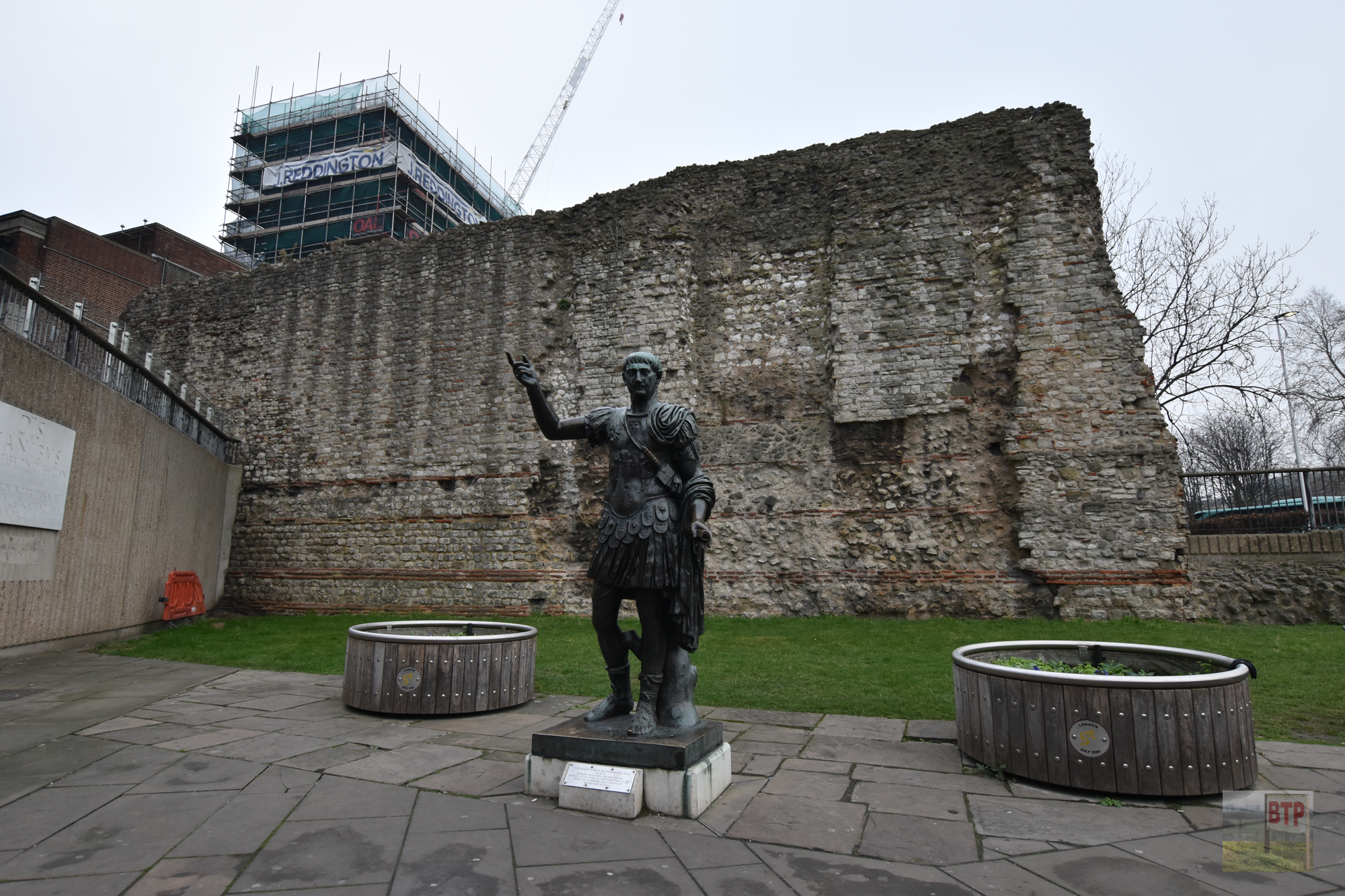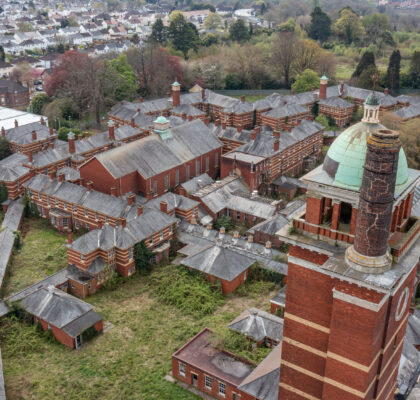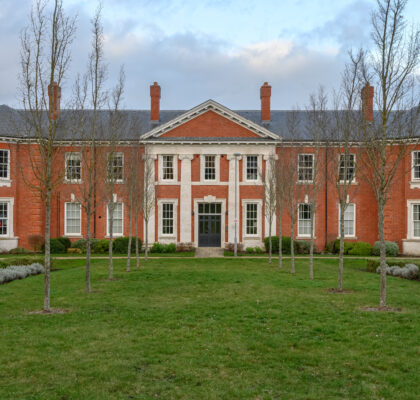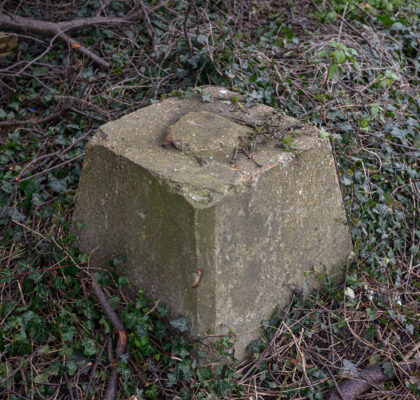Directly north of the Tower of London stands the best remaining segment of the Roman Wall which one circulated the city of London. What would have been a 2.5 mile-long wall, is estimated to have been built between 190 and 225 A.D. Archaeologists have managed to date it from excavated coins.
The wall would have enclosed an area of around 330 acres yet only had 5 gates to access the city. But to get to the wall from the eastern side, you’ve have to pass a 5 metre ditch with a 6 foot drop. This section of the wall stood close to the south-east corner of the ditch, now lying inside the bailey of the Tower of London. It is built of rubble (mostly Kentish ragstone) bound in a hard mortar, and faced on either side by roughly squared ragstone blocks. At every fifth or sixth course the wall incorporates a band of red Roman tiles, intended to ensure the courses remained level over long stretches of masonry – giving the wall its distinctive striped appearance. This section shows signs of medieval alteration, and at 10.7 metres high is one of the tallest surviving sections.
The wall was originally built without the external D-shaped bastions or turrets which still survive at several places around the city. One of these bastions, to the north of the standing section of wall, has been found to incorporate reused stonework. This includes parts of a monument bearing the inscription of Julius Alpinus Classicianus, procurator of Britain, who was responsible for the reconstruction of London after the chaos of Boudicca’s rebellion and its violent aftermath. The dismantling of this monument indicates the urgency with which the wall was strengthened in the later Roman period. The reconstructed Classicianus monument is now displayed in the British Museum, although a replica can be viewed on the site.
Post Roman
The wall remained standing after the Roman Army left in 410 A.D. although was badly damaged and left abandoned. In the late Anglo-Saxon period it was repaired and incorporated into the medieval defences to protect the city. A new gateway was added to the wall close to the Tower of London moat in 1300, but eventually fell down into the moat and can even be seen today (right). The Roman wall continuted to be used alongside modern defences with buildings built either side of it in the mid 1600’s. Since then views of the wall have been obscured and demolished to make way for new buildings and railway lines. In 1938 the wall and part of the land on its western side were owned by the Ministry of Works. Since the 1930’s several buildings which had formerly hidden this section of the wall have been cleared away, revealing it to view.
